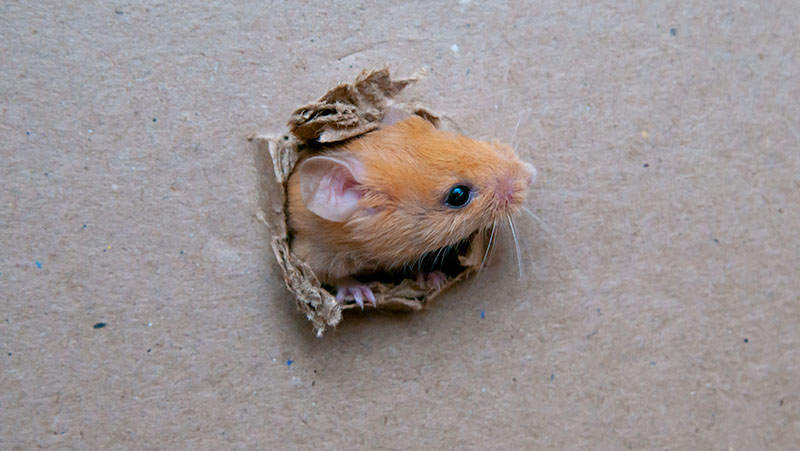Rodents most likely to be encountered in Arizona:
House Mouse, Roof rat, Pack rat are our top 3 rodents that Arizonans deal with the most. Mice and rats are common problems in and around homes, businesses and schools in all Phoenix and surrounding areas. While Mice and rats differ, all are associated with allergens and asthma triggers. All can transmit pathogens and rats can cause fires by gnawing on electrical wires.
Inspection For Rodents
Identifying rodent problems typically comes with obvious signs including droppings and pilfered food for mice and rats and specifically gnaw and grease marks for rats. Roof Rats tend to rub against surfaces, and their natural oils along with dirt and dust from their travels will stain any surfaces found along their travel ways, including corners between walls and floors, along the base of the foundations, along pipes or electrical conduits and around holes and voids used to travel in and between walls as access points.
Cultural and physical strategies for rodents:
Non-chemical measures including habitat modification, exclusion and sanitation are very effective in eliminating rodent problems
- Seal any openings greater than ¼” diameter in foundations, walls, fascia, roof; screen vents; install door sweeps to prevent access.
- Install heavy-gauge kick plates at the base of any doors with evidence of rodent gnawing
- Remove or trim ground cover and other landscape plants to expose ground and discourage rodent travel ways and rat burrowing.
- Avoid landscaping that creates ideal habitat for burrows including stone walls with unsealed gaps.
- Place exterior trash cans and dumpsters away from building entrances to avoid attracting rodents to building.
- Use exterior trash receptacles with tight-fitting or spring-loaded lids. Use self-contained, leak-proof compactors instead of dumpsters, or at least use dumpsters with tight-fitting lids.
- Empty exterior trash receptacles daily at the end of each day.
- Fix plumbing leaks, improve drainage to prevent water accumulation near the building.
- Clean gutters to prevent water retention.
- Remove mulch from building foundations to reduce harbor-age. Do not allow grass clippings or leaf litter to accumulate adjacent to buildings.
- Remove debris, clutter or stored materials from building exterior and adjacent areas to reduce harbor-age and permit proper cleaning and inspection.
- Remove clutter and items stored on floor in interior entryways, storage and other areas to reduce harborage and permit proper cleaning and inspection.
- Visually inspect vulnerable areas (e.g., food service, custodial closets, laundry rooms, vending areas, garages, under sinks, sill plates, crawlspaces, etc.) for droppings or grease marks.
- Clean up droppings, grease marks and urine promptly using water, detergent and disinfectant and wearing proper personal protective equipment.
- Fill in inactive burrows with appropriate filler, e.g., mortar for burrows in or under concrete, soil.
When you need a professional, they can:
- Place non-toxic monitoring bait blocks in tamper-resistant stations in non-visible, inaccessible areas and check regularly for feeding.
- Place glue boards, snap traps, shock traps and/or live traps in non-visible, inaccessible areas to trap and remove rodent populations.
- Where non-chemical measures are inadequate, rodenticides can be used in a manner that greatly reduces potential for non-target exposure, and a highly trained and licensed professional must be used.
Invader Pest Management has been treating for Rodents for over 29 years and have a solid protocol for treating rodents and specifically roof rats. Roof rats have become a major pest in Phoenix over the past 15 years and their populations have exploded and expanded their infestation to almost every suburb of metropolitan Phoenix. Roof rats are best left to the professional, they are not a Do-it-Yourself pest.
